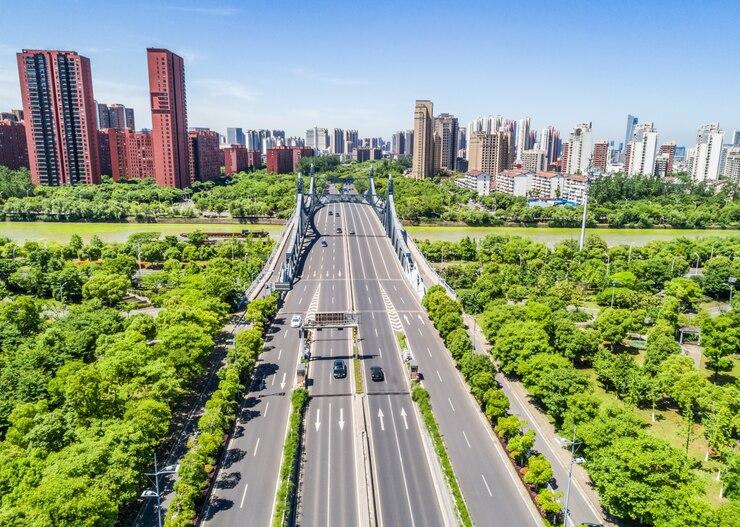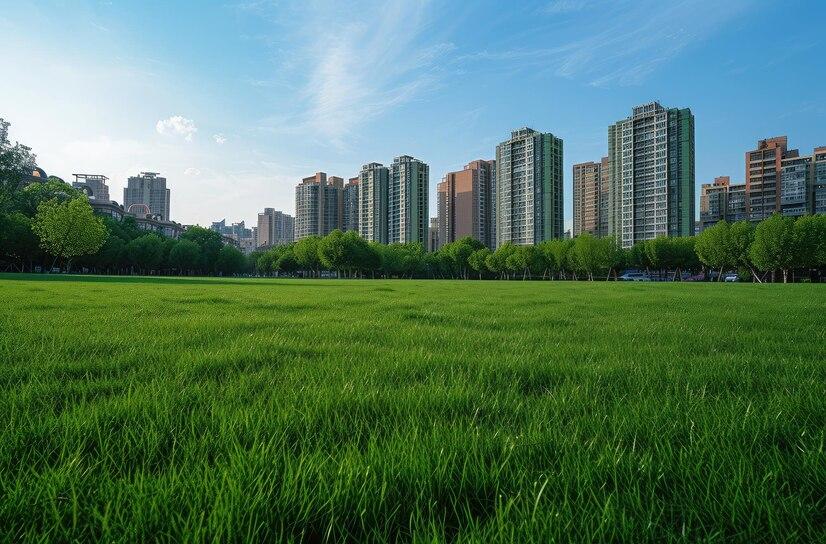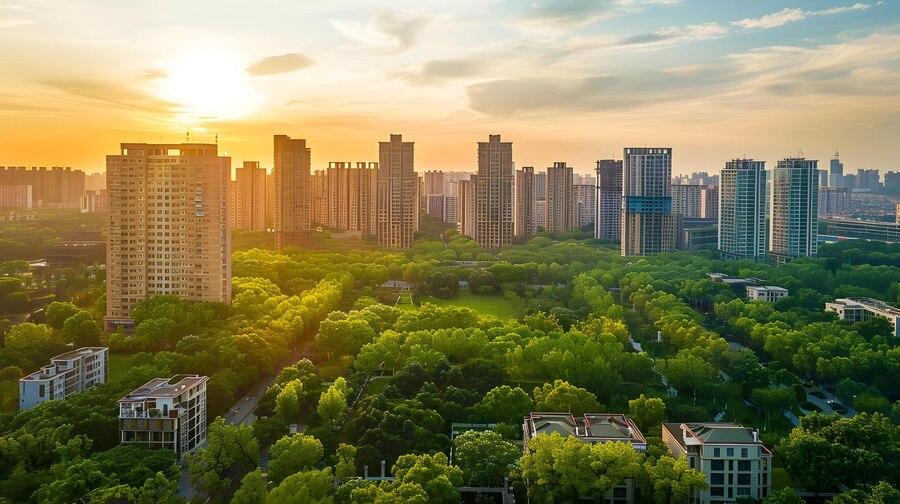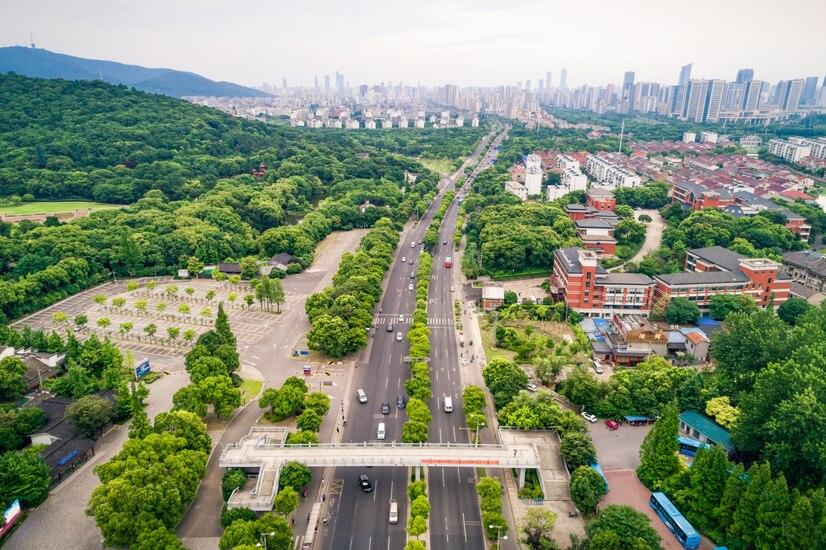



Table of Contents
- Introduction
- Purpose of Green Zones
- Types of Green Zones
- Benefits of Green Zones
- Impact on Real Estate Development
- Future Trends in Green Zones
- Conclusion
- Faq's
Introduction
In real estate, a "Green Zone" is a designated area where development is either restricted or regulated to prioritize environmental conservation and sustainability. These zones are crucial in urban planning as they ensure that certain regions maintain their natural landscapes, biodiversity, and ecological functions. The establishment of Green Zones is often part of a broader strategy to balance urban expansion with the need to protect the environment. Green Zones can take various forms, including protected natural areas like forests, wetlands, and wildlife habitats, which are safeguarded from urbanization and industrial activities. These areas play a vital role in preserving biodiversity, providing habitats for wildlife, and maintaining ecological balance. Additionally, they contribute to mitigating the effects of climate change by acting as carbon sinks and regulating local climates.
Purpose of Green Zones
 Green Zone
Green Zone
The purpose of Green Zones in real estate and urban planning is multifaceted, focusing primarily on environmental conservation, sustainable development, and enhancing the quality of life. Here are the key purposes of Green Zones:
Environmental Protection: Green Zones are established to preserve natural landscapes, ecosystems, and biodiversity. By restricting or regulating development in these areas, they help protect forests, wetlands, wildlife habitats, and other ecologically sensitive areas from urbanization and industrial activities.
Sustainable Urban Development: Green Zones promote sustainable development by integrating green spaces into urban planning. These areas help maintain ecological balance, reduce pollution, and manage the environmental impact of urbanization, ensuring that cities grow in a more environmentally friendly manner.
Climate Regulation: Green Zones play a crucial role in regulating local climates. They act as carbon sinks, absorb pollutants, and mitigate the urban heat island effect, helping to combat climate change and improve air quality.
Preservation of Farmland: In some regions, Green Zones include agricultural lands where non-agricultural development is restricted. This helps preserve farmland, support sustainable agriculture, and ensure food security.
Recreational and Aesthetic Value: Urban Green Zones, such as parks and gardens, provide residents with spaces for recreation, relaxation, and community activities. They enhance the aesthetic appeal of cities and contribute to the physical and mental well-being of residents.
Cultural and Historical Preservation: Green Zones can also protect areas of cultural or historical significance, ensuring that they remain preserved for future generations.
Property Value Enhancement: Properties located near Green Zones often experience higher market values due to the desirability of proximity to green spaces, making these zones beneficial for real estate investment.
Types of Green Zones
 Type of Green Space
Type of Green Space
Green Zones encompass a variety of designated areas aimed at preserving the environment, promoting sustainability, and enhancing the quality of life within urban and rural settings. The classification of Green Zones can vary based on their primary functions, legal protections, and ecological significance. Here are the predominant types of Green Zones:
Protected Natural Areas:
National Parks: These are large swathes of natural land designated for the protection of wildlife and natural habitats. Development and commercial activities are highly restricted to preserve ecological integrity.
Wildlife Sanctuaries: Similar to national parks but may allow certain human activities under strict regulations to protect specific species and their habitats.
Nature Reserves: Areas set aside for the conservation of flora, fauna, and geological features, often used for scientific research and education.
Urban Green Spaces:
Public Parks: Managed spaces within urban environments designed for recreation, relaxation, and community gatherings.
Community Gardens: Plots allocated within cities for residents to cultivate plants, promoting local food production and community engagement.
Green Roofs and Walls: Incorporation of vegetation on building surfaces to improve air quality and reduce urban heat islands.
Agricultural Green Zones:
Farmland Preservation Areas: Regions designated to protect agricultural lands from urban sprawl, ensuring continued food production and rural livelihoods.
Urban Agriculture Zones: Areas within cities allocated for farming activities, supporting local food systems and reducing food miles.
Ecologically Sensitive Zones (ESZ):
Wetlands: Marshes, swamps, and other water-saturated lands protected due to their role in water purification, flood control, and as habitats for diverse species.
Mangrove Forests: Coastal ecosystems safeguarded for their importance in protecting shorelines, supporting marine life, and carbon sequestration.
Green Belts:
Peri-Urban Green Belts: Rings of protected open land surrounding urban areas to limit urban sprawl, preserve the character of rural communities, and provide recreational spaces.
Buffer Zones: Areas established around sensitive ecological or historical sites to protect them from the adverse effects of nearby development.
Conservation Easements:
Privately Owned Lands with Restrictions: Lands where owners have agreed to limit development and land use to preserve environmental values, often in exchange for tax benefits.
Special Ecological Zones:
Biosphere Reserves: Regions that combine protected core areas with zones where sustainable economic practices are promoted, integrating conservation with sustainable use.
Ramsar Sites: Wetlands of international importance designated under the Ramsar Convention for their ecological significance.
Benefits of Green Zones
 Benefit of Green Space
Benefit of Green Space
Green Zones offer a wide array of benefits that positively impact the environment, economy, and overall quality of life. Here are some key benefits:
Environmental Protection:
Biodiversity Conservation: Green Zones protect habitats and ecosystems, helping to preserve a wide variety of plant and animal species.
Climate Regulation: Vegetated areas absorb carbon dioxide, contributing to climate change mitigation by acting as carbon sinks.
Air and Water Purification: Trees and plants filter pollutants from the air and water, improving the quality of natural resources.
Erosion Control: Vegetation stabilizes soil, preventing erosion and reducing the impact of floods and landslides.
Enhanced Quality of Life:
Recreational Spaces: Green Zones provide areas for outdoor activities such as walking, cycling, and picnicking, promoting physical and mental well-being.
Aesthetic Value: Green spaces enhance the beauty of urban and rural environments, making areas more attractive to residents and visitors.
Noise Reduction: Vegetation acts as a natural sound barrier, reducing noise pollution, especially in densely populated urban areas.
Economic Benefits:
Increased Property Value: Proximity to Green Zones often raises property values due to the desirable living conditions they create.
Tourism: Protected natural areas and parks attract tourists, boosting local economies and providing jobs in eco-tourism and hospitality.
Cost Savings: Green infrastructure, such as urban parks and green roofs, can reduce energy costs by cooling buildings and managing stormwater.
Health and Well-being:
Mental Health Benefits: Access to nature and green spaces has been linked to reduced stress, anxiety, and depression, contributing to overall mental health.
Physical Health: Green Zones encourage physical activities such as jogging, hiking, and sports, reducing the risk of lifestyle-related diseases.
Urban Planning and Development:
Urban Cooling: Green Zones help mitigate the urban heat island effect by cooling the surrounding areas through shade and evapotranspiration.
Sustainable Development: Integrating Green Zones into urban planning supports sustainable development by balancing construction with conservation efforts.
Impact on Real Estate Development
Higher Property Values: Proximity to Green Zones often leads to an increase in property values. Homes and commercial properties near these areas are seen as more desirable due to the added benefits of open space, cleaner air, and natural beauty.
Regulatory Challenges: Green Zones come with stringent environmental regulations that can limit development opportunities. Real estate developers may face challenges in obtaining permits or may need to adjust their plans to comply with environmental protection laws.
Sustainable Development: Green Zones encourage the integration of eco-friendly practices in real estate projects. Developers might incorporate green building techniques, renewable energy sources, and sustainable landscaping to align with the environmental focus of the area.
Limited Land Availability: Since Green Zones are protected areas, the availability of land for development is restricted. This can lead to increased competition and higher costs for land in adjacent areas.
Enhanced Community Appeal: Properties near Green Zones often attract buyers and tenants looking for a better quality of life, which includes access to nature and recreational spaces. This can lead to the development of more community-focused residential projects.
Urban Planning Influence: The presence of Green Zones can shape urban planning decisions, guiding the placement of new developments, infrastructure, and public services. Cities might prioritize maintaining these zones, influencing the overall layout of urban areas.
Future Trends in Green Zones
 Future Trend In Green Zone
Future Trend In Green Zone
Increased Integration in Urban Planning:
As cities continue to grow, urban planners are placing a greater emphasis on incorporating Green Zones into the overall design of urban areas. This trend is likely to expand, with more cities adopting comprehensive green infrastructure plans that include parks, green roofs, and urban forests.
Smart Green Zones:
The future will see the rise of "smart" Green Zones equipped with technology to monitor environmental health, manage resources efficiently, and enhance visitor experiences. Sensors, IoT devices, and AI could be used to track air quality, soil health, and biodiversity, making these areas not just green but also smart.
Expansion of Mixed-Use Developments:
Green Zones will increasingly be integrated into mixed-use developments, where residential, commercial, and recreational spaces coexist. This trend promotes a balanced lifestyle, with easy access to nature, work, and amenities, enhancing the appeal of such areas.
Focus on Biodiversity Conservation:
Future Green Zones will likely prioritize biodiversity conservation, serving as vital habitats for various species in urban settings. Developers and planners may work together to create corridors that connect different green Zones, promoting ecological networks that support wildlife.
Climate-Resilient Green Zones:
With climate change concerns growing, Green Zones will be designed to mitigate climate impacts. This includes creating flood-resistant parks, using vegetation to combat urban heat islands, and employing sustainable water management practices within these zones.
Conclusion
Green zones play a crucial role in balancing urban development with environmental conservation. By protecting these areas, cities can ensure sustainable growth, preserve natural resources, and enhance the quality of life for their residents. As the world moves towards greener practices, the significance of green zones in real estate will continue to rise.
explore further
Latest from Encyclopedia
More from Interactions
Resources
Dwello, for every home buyer, is a way to go from 'I feel' to 'I know', at no extra cost.




